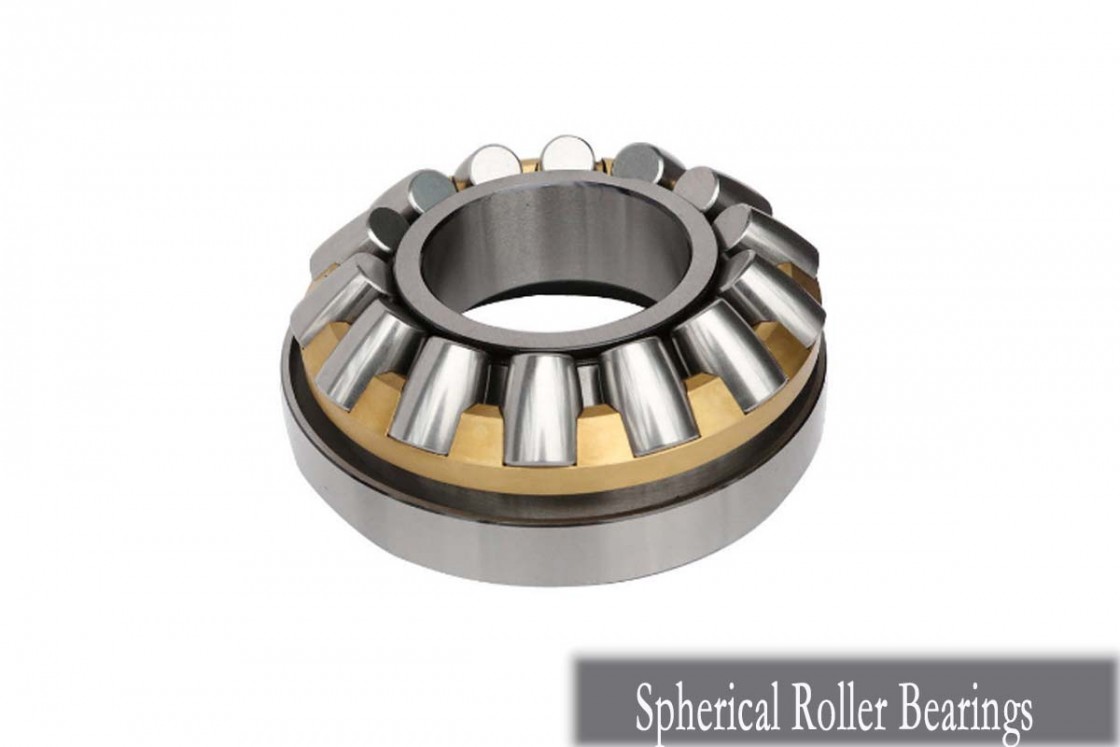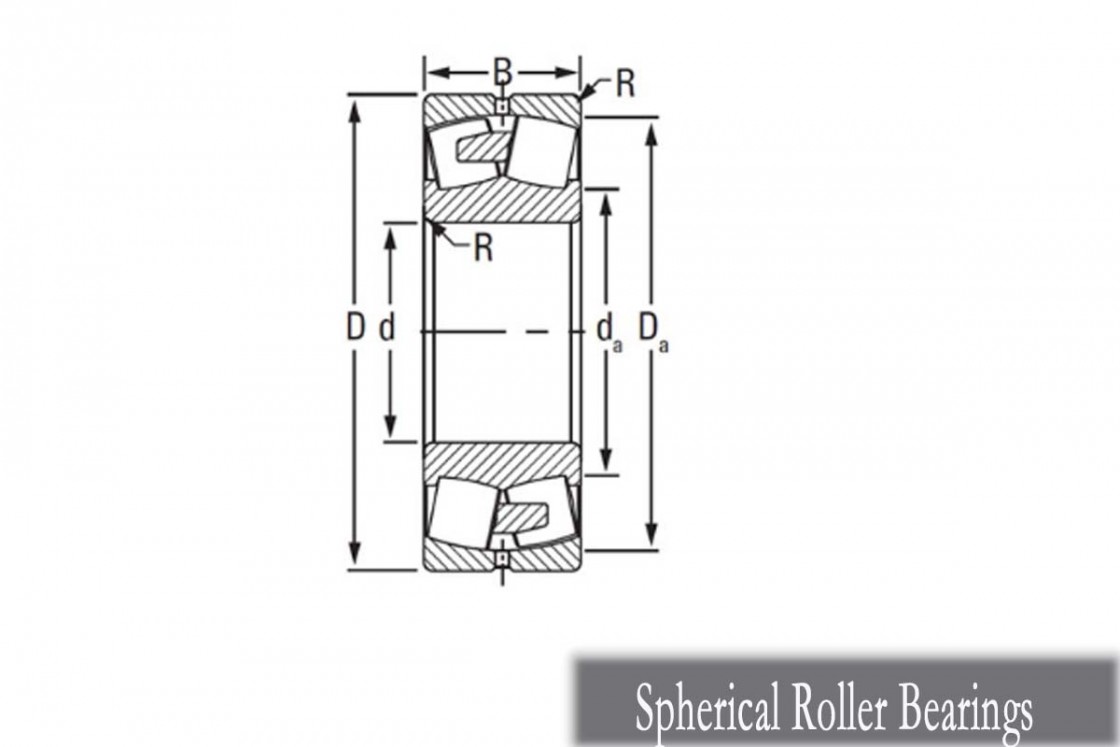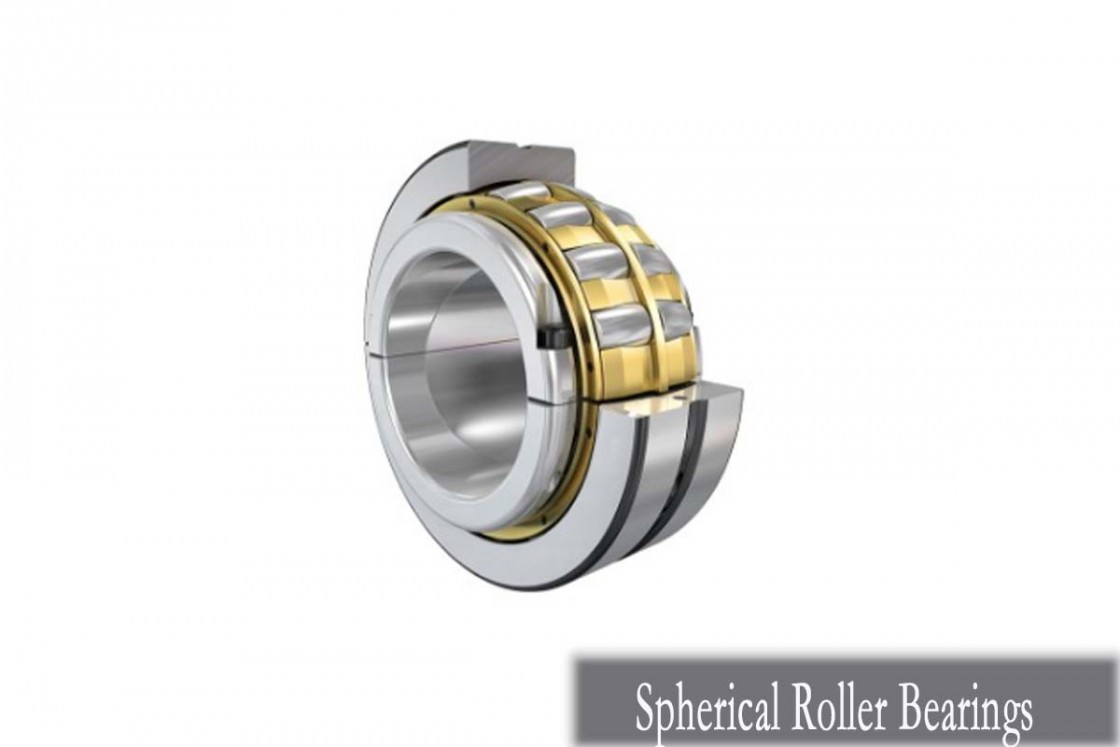Precision Performance: The Anatomy of Spherical Roller Bearings
Introduction
Precision bearings play a pivotal role in numerous industries, where optimal performance and reliability are paramount. Among these precision bearings, Spherical Roller Bearings (SRBs) stand out for their unique design and capabilities.
Spherical Roller Bearings (SRBs) are a type of rollingelement bearing renowned for their ability to accommodate high radial loads and moderate axial loads in both directions. They derive their name from the spherical shape of the rollers and the spherical raceway on the outer ring, which enables them to operate efficiently even in misaligned conditions.
These bearings are widely utilized across various industries, including automotive, aerospace, mining, and heavy machinery, where demanding operating conditions are commonplace. The significance of SRBs lies in their capacity to withstand heavy loads, high speeds, and harsh environments while maintaining precision performance.

Understanding Spherical Roller Bearings
Spherical Roller Bearings (SRBs) are a critical component in various mechanical systems, renowned for their ability to withstand high radial loads and accommodate misalignment.
Components of Spherical Roller Bearings:
|
Inner and Outer Rings |
The inner ring of an SRB is typically mounted on the shaft, while the outer ring is fixed within the housing. These rings provide the structural framework for the bearing and serve as the raceways for the rollers. |
|
Rollers |
SRBs feature spherical rollers that are symmetrically arranged between the inner and outer rings. These rollers facilitate smooth rotation under heavy loads and allow the bearing to accommodate misalignment. |
|
Cages |
To maintain proper spacing between the rollers and prevent friction, SRBs often incorporate cages made of steel or brass. These cages also help distribute the load evenly across the rollers, enhancing the bearing's durability and performance. |
|
Raceways |
The raceways in SRBs consist of curved surfaces on both the inner and outer rings, designed to match the spherical shape of the rollers. This configuration enables the rollers to operate efficiently under radial and axial loads while accommodating misalignment.
|
Advantages of Spherical Roller Bearings:
High Radial Load Capacity: SRBs are engineered to withstand heavy radial loads, making them ideal for applications where axial loads are predominant.
Misalignment Tolerance: Unlike other bearing types, SRBs can accommodate misalignment between the shaft and housing, reducing the risk of premature wear and failure.
Uniform Load Distribution: The spherical design of the rollers and raceways enables SRBs to distribute loads evenly, minimizing stress concentrations and prolonging bearing life.
Operating Principles of Spherical Roller Bearings:
SRBs operate on the principle of distributing loads evenly across the bearing surfaces, thereby minimizing friction and wear. When subjected to radial or axial loads, the rollers within the bearing adjust their position to maintain contact with the inner and outer rings, ensuring smooth rotation and efficient load transmission.
In summary, Spherical Roller Bearings (SRBs) are integral components in various industrial applications, offering robust construction, high loadcarrying capacity, and superior misalignment tolerance. Understanding the anatomy and operational principles of SRBs is crucial for optimizing machinery performance and ensuring reliable operation in diverse operating conditions.

Anatomy and Design Features of Spherical Roller Bearings
Spherical Roller Bearings (SRBs) are pivotal components in machinery, renowned for their ability to accommodate misalignment and axial displacement while delivering precision performance. Let's delve into the intricate anatomy and design features that make SRBs indispensable in various industrial applications.
Spherical Shape of Rollers and Raceways:
One of the defining characteristics of SRBs is the spherical shape of their rollers and raceways. Unlike traditional bearings, which feature cylindrical rollers and raceways, SRBs have curved surfaces that match the spherical shape of the rollers. This design allows SRBs to accommodate misalignment and axial displacement, ensuring smooth operation even under challenging conditions.
Cage Designs and Materials:
SRBs incorporate cages to maintain proper spacing between the rollers and prevent frictioninduced wear. These cages are often made of steel or brass and are engineered to facilitate smooth rolling motion while preventing direct contact between the rollers. By guiding the movement of the rollers, the cage design ensures optimal load distribution and minimizes the risk of roller skewing or jamming.
Importance of Lubrication Systems and Sealing Solutions:
Proper lubrication is essential for maximizing the performance and lifespan of SRBs. Lubricants reduce friction between moving components, dissipate heat, and prevent corrosion and wear. Additionally, effective sealing solutions help protect the bearing internals from contamination and moisture ingress, ensuring reliable operation in harsh environments.
In summary, the anatomy and design features of Spherical Roller Bearings (SRBs) enable them to excel in demanding industrial applications. Their spherical rollers and raceways, coupled with carefully engineered cage designs and effective lubrication systems, ensure optimal performance, longevity, and reliability in diverse operating conditions.
|
Brand |
Features |
Applications |
Notable Advantages |
|
SKF |
SKF Spherical Roller Bearings are known for their high loadcarrying capacity and robustness. They are designed to accommodate misalignment and heavy radial loads in various industrial applications. |
Industrial machinery Mining equipment Wind turbines |
Advanced internal geometries for optimized load distribution Enhanced sealing solutions for improved contamination resistance Grease and oil lubrication options for diverse operating conditions |
|
FAG |
FAG Spherical Roller Bearings are renowned for their superior performance and reliability. They feature precisionengineered components and innovative designs to ensure exceptional durability and operational efficiency. |
Automotive industry Aerospace applications Steel mills |
Innovative Xlife technology for extended service life Highquality materials for enhanced durability and resistance to wear Optimized internal clearance options for specific application requirements |
|
NTN |
NTN Spherical Roller Bearings are characterized by their precision manufacturing and superior quality. They offer exceptional performance in demanding environments, delivering reliable operation and long service life. |
Construction machinery Paper mills Cement plants |
Advanced heat treatment processes for increased hardness and durability Sealed and shielded options for enhanced protection against contaminants Wide range of sizes and configurations to suit diverse application needs |
|
Timken |
Timken Spherical Roller Bearings are engineered to deliver outstanding performance in harsh operating conditions. They feature innovative designs and materials to ensure optimal reliability and efficiency. |
Railways Offhighway vehicles Marine equipment |
Robust steel construction for maximum durability and strength Enhanced surface finishes for reduced friction and wear Customized solutions available for specific application requirements |
This table provides a comparative overview of Spherical Roller Bearings from leading brands, highlighting their distinct features, applications, and notable advantages. Each brand offers unique benefits tailored to meet the diverse needs of industrial users.
Applications and Performance Characteristics of Spherical Roller Bearings
Spherical Roller Bearings (SRBs) are indispensable components in various industries due to their exceptional performance characteristics and versatile applications. Let's delve into the diverse industries where SRBs are extensively utilized and explore their performance under different operating conditions.
Industries and Machinery Utilizing SRBs:
HeavyDuty Equipment: SRBs play a vital role in heavyduty machinery used in construction, mining, and material handling. These applications demand bearings capable of withstanding high radial and axial loads while operating in harsh environments.
Mining: In the mining industry, SRBs are crucial for conveyor systems, crushers, and other equipment used in ore processing and material handling. Their robust construction and ability to handle heavy loads make them ideal for these demanding applications.
Construction: SRBs are employed in construction machinery such as excavators, cranes, and concrete mixers. These bearings provide reliable performance in equipment subjected to heavy loads, vibrations, and challenging working conditions on construction sites.
Performance Characteristics of SRBs:
High LoadCarrying Capacity: SRBs are designed to accommodate both radial and axial loads simultaneously, making them suitable for applications with varying load requirements. Their robust construction and advanced designs ensure reliable performance even under heavy loads.
Operating Conditions: SRBs exhibit excellent performance across a wide range of operating conditions, including high speeds, extreme temperatures, and heavy shock loads. Their ability to maintain performance in adverse environments contributes to the efficiency and reliability of industrial machinery.
Enhanced Reliability: SRBs are engineered for longevity and reliability, resulting in reduced downtime and maintenance costs for industrial equipment. Their superior performance characteristics contribute to increased productivity and operational efficiency in various applications.
Case Studies Demonstrating the Benefits of SRBs:
HeavyDuty Equipment Reliability: A mining company implemented SRBs in their conveyor systems, resulting in reduced downtime and maintenance costs. The bearings' ability to withstand heavy loads and harsh conditions contributed to improved equipment reliability and productivity.
Construction Machinery Efficiency: A construction firm upgraded its excavators with SRBs, leading to smoother operation and increased efficiency on construction sites. The bearings' high loadcarrying capacity and resistance to shock loads improved the performance and longevity of the machinery.
In conclusion, Spherical Roller Bearings (SRBs) are indispensable components in various industries, providing reliable performance and versatility in demanding applications. Their high loadcarrying capacity, resilience to adverse conditions, and enhanced reliability make them essential for optimizing equipment performance and productivity across different sectors.
Installation and Maintenance Best Practices for Spherical Roller Bearings
Proper installation and maintenance are crucial for maximizing the performance and longevity of Spherical Roller Bearings (SRBs). we will discuss essential guidelines and recommendations for installing and maintaining SRBs to ensure precision performance.
|
Guidelines for Proper SRB Installation: |
Recommendations for Maintenance Practices: |
|
Shaft and Housing Considerations: |
Regular Inspection: |
|
Before installing SRBs, ensure that the shaft and housing are clean, free from burrs, and properly aligned. Use precision instruments to measure shaft and housing dimensions accurately. Any misalignment or surface irregularities can lead to premature bearing failure. |
Implement a regular maintenance schedule to inspect SRBs for signs of wear, damage, or contamination. Check for abnormal noise, vibration, or temperature rise during operation, as these may indicate bearing problems. |
|
|
|
|
Preload Adjustment: |
Condition Monitoring: |
|
Proper preload adjustment is essential for optimizing the performance of SRBs. Follow the manufacturer's recommendations for preload values and adjustment procedures. Overly tight or loose preload can lead to excessive friction, heat generation, and premature wear. |
Utilize advanced condition monitoring techniques such as vibration analysis, temperature monitoring, and oil analysis to detect early signs of bearing degradation. Implement predictive maintenance strategies to address potential issues before they escalate into costly failures. |
|
|
|
|
Alignment Techniques: |
Lubrication Optimization: |
|
Accurate alignment of the shaft and housing is critical for minimizing stress on the bearings and ensuring smooth operation. Use precision alignment tools such as dial indicators or laser alignment systems to achieve proper alignment within specified tolerances. |
Select appropriate lubricants compatible with SRB materials and operating conditions. Ensure proper lubrication methods, including the correct quantity and frequency of lubricant replenishment. Over or underlubrication can lead to bearing damage and reduced lifespan. |
Importance of Proper Lubrication:
Proper lubrication is paramount for optimizing the performance and extending the service life of SRBs. Lubricants provide essential lubrication film between bearing components, reducing friction, wear, and heat generation. Select lubricants with the appropriate viscosity, additives, and compatibility with operating conditions to ensure optimal performance and reliability.
In conclusion, adhering to proper installation and maintenance best practices is essential for ensuring the precision performance and longevity of Spherical Roller Bearings (SRBs). By following guidelines for installation, implementing regular maintenance schedules, and optimizing lubrication practices, industrial professionals can maximize the efficiency, reliability, and lifespan of SRBs in various applications.
Advancements and Innovations in Spherical Roller Bearings
Spherical Roller Bearings (SRBs) have witnessed significant advancements and innovations in recent years, driven by the constant pursuit of enhancing performance, precision, and durability. In this section, we will explore the latest developments in SRB technology and their implications for various industries.
Improved Materials and Coatings:
Manufacturers have been actively researching and developing advanced materials for SRBs to enhance their mechanical properties and resistance to wear and fatigue. Highperformance alloys and heat treatment processes are being employed to increase the loadcarrying capacity and extend the service life of SRBs. Additionally, specialized coatings, such as DLC (DiamondLike Carbon) and ceramic coatings, are being applied to reduce friction, minimize wear, and enhance corrosion resistance, particularly in harsh operating environments.
Sealing Solutions for Enhanced Performance:
The development of advanced sealing solutions has been instrumental in improving the performance and reliability of SRBs. Innovative sealing technologies, including labyrinth seals, triplelip seals, and integrated sealing systems, are being adopted to prevent contamination ingress, retain lubrication, and prolong bearing life. These sealing solutions help maintain optimal operating conditions within the bearing assembly, thereby minimizing the risk of premature failure due to contamination or lubricant degradation.
Integration of Sensor Technology:
An emerging trend in SRB technology is the integration of sensor technology for realtime monitoring and predictive maintenance. Smart bearings equipped with embedded sensors, such as accelerometers, temperature sensors, and vibration sensors, enable continuous monitoring of bearing condition and performance parameters. This realtime data allows for early detection of potential issues, such as abnormal vibration, temperature rise, or lubrication degradation, facilitating proactive maintenance interventions to prevent catastrophic failures and unplanned downtime.
Future Developments and Implications:
Looking ahead, the future of SRB technology holds promising possibilities for further advancements. Ongoing research initiatives focus on enhancing bearing design optimization, developing novel lubrication techniques, and exploring the potential of additive manufacturing for customized bearing solutions. Additionally, advancements in computational modeling and simulation tools are expected to accelerate the development and validation of innovative SRB designs, leading to improved performance, reliability, and durability across diverse applications.
In conclusion, the advancements and innovations in Spherical Roller Bearings (SRBs) underscore the commitment of manufacturers to continuously push the boundaries of technology in pursuit of precision performance and reliability. By leveraging improved materials, coatings, sealing solutions, and sensor technology, SRBs are poised to play a pivotal role in driving efficiency, productivity, and sustainability across various industries in the years to come.

Conclusion
In conclusion, the anatomy and design of Spherical Roller Bearings (SRBs) play a pivotal role in achieving precision performance and reliability across various industrial applications. Throughout this discussion, we have explored the intricate components and operating principles of SRBs, highlighting their ability to withstand high radial and axial loads while accommodating misalignment.
SRBs serve as critical components in heavyduty equipment, mining machinery, construction vehicles, and other demanding industrial environments. Their spherical shape, along with advanced cage designs and lubrication systems, enables them to excel in harsh operating conditions, ensuring smooth operation and extended service life.
It's evident that SRBs are indispensable for achieving precision performance in machinery and equipment. As technology continues to advance, SRB manufacturers are introducing innovative solutions to further enhance their performance, durability, and reliability.
As industry professionals, it is imperative to recognize the significance of SRBs and leverage their technology to optimize machinery design and operation. By incorporating SRBs into equipment, we can enhance efficiency, productivity, and overall performance, ultimately driving success in various industrial sectors.
In summary, Spherical Roller Bearings stand as a cornerstone of precision performance in the realm of bearings, and their continued evolution and application are poised to shape the future of industrial machinery and equipment.
FAQs: Common Questions About Spherical Roller Bearings
What are Spherical Roller Bearings (SRBs)?
Spherical Roller Bearings (SRBs) are a type of rollingelement bearing renowned for their ability to accommodate high radial and axial loads, as well as misalignment. They consist of an inner ring with two raceways, an outer ring with a spherical raceway, and spherical rollers with symmetrical barrelshaped profiles.
How do SRBs differ from other types of bearings?
Unlike other types of bearings, such as ball bearings or cylindrical roller bearings, SRBs feature a spherical roller design that allows them to operate effectively under misaligned conditions. This unique design enables SRBs to handle heavy loads and shock loads while maintaining smooth rotation.
What are the applications of SRBs?
SRBs are widely used in various industries, including mining, construction, automotive, and heavy machinery. They are commonly found in equipment such as conveyor systems, crushers, vibratory screens, and paper machines, where they are required to support heavy loads and withstand harsh operating conditions.
How do SRBs handle misalignment?
SRBs are designed with a spherical outer ring raceway, which allows the bearing to accommodate misalignment between the shaft and housing. This feature helps to reduce stress on the bearing elements and prolongs bearing life, particularly in applications where shaft deflections or mounting errors are common.
What factors should be considered when selecting SRBs?
When selecting SRBs, factors such as load capacity, operating speed, temperature, lubrication requirements, and environmental conditions should be taken into account. It's essential to choose the appropriate bearing size, type, and cage design to ensure optimal performance and reliability in specific applications.
How do I install and maintain SRBs properly?
Proper installation and maintenance are crucial for maximizing the performance and lifespan of SRBs. Follow manufacturer guidelines for shaft and housing preparation, preload adjustment, and alignment techniques during installation. Implement regular maintenance schedules to monitor bearing condition, lubrication, and alignment, and address any issues promptly to prevent premature failure.
What are the common causes of SRB failure?
Common causes of SRB failure include inadequate lubrication, contamination, overloading, misalignment, and improper installation. Regular inspection and maintenance can help identify potential issues early and prevent costly downtime and equipment damage.
These FAQs provide valuable insights into the design, applications, installation, and maintenance of Spherical Roller Bearings, offering a comprehensive understanding of their role in various industrial applications.